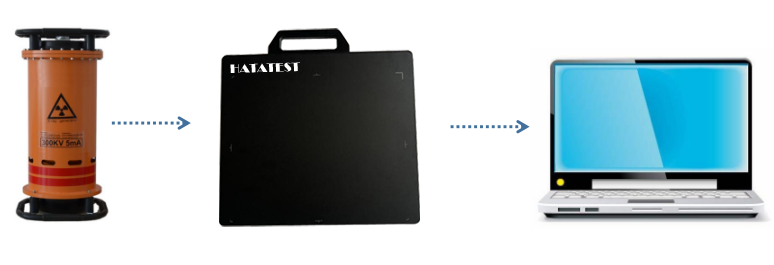Ultrasonic nondestructive testing, also known as ultrasonic NDT or simply UT, is a method of characterizing the thickness or internal structure of a test piece using high-frequency sound waves. The frequencies, or pitch, used for ultrasonic testing typically range from 500 kHz to 20 MHz, many times higher than the limit of human hearing.

High-frequency sound waves are very directional and will travel through a medium, such as steel or plastic, until they encounter a boundary with another medium, such as air, and reflect back to their source. By analyzing these reflections, it is possible to measure the thickness of a test piece or find evidence of cracks or other hidden internal flaws.
In industrial applications, ultrasonic testing is widely used on metals, plastics, composites, and ceramics. The only common engineering materials that are not suitable for ultrasonic testing with conventional equipment are wood and paper products.
Ultrasonic testing is completely nondestructive. The test piece does not have to be cut or sectioned, or exposed to damaging chemicals. Access to only one side is required, unlike measurements with mechanical thickness tools like calipers and micrometers. There are no potential health hazards associated with ultrasonic testing, unlike radiography. When a test has been properly set up, results are highly repeatable and reliable.
-
 Sales@hata-ndt.com
Sales@hata-ndt.com -
 +86 371 63217179
+86 371 63217179










